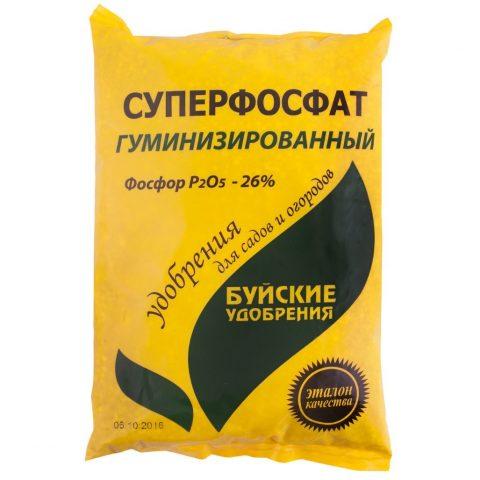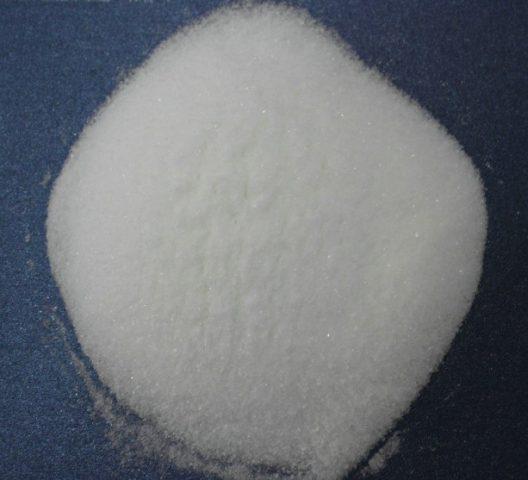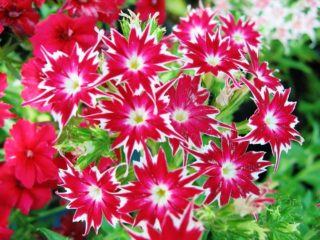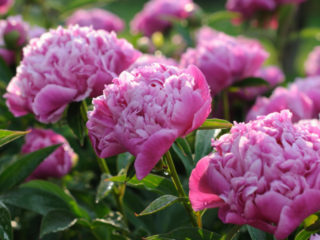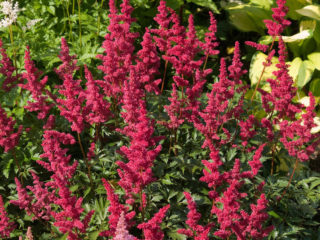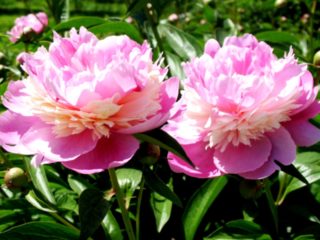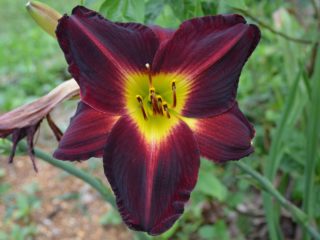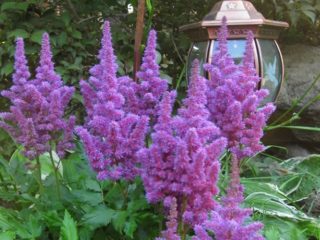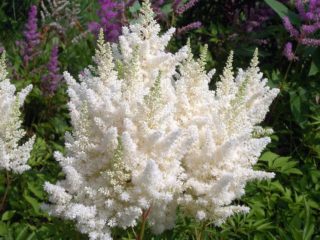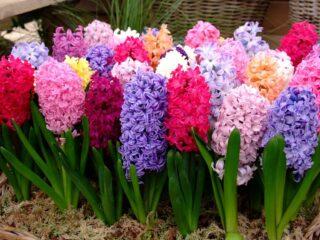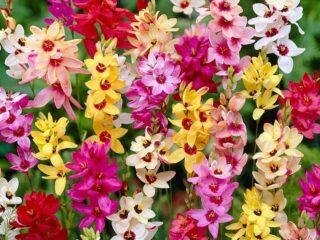Content
When lilies have faded in the Moscow region, beginners in gardening make mistakes by stopping caring for the plant. To preserve the culture and admire the buds next year, you should adhere to a number of rules.
How to care for lilies in the fall after flowering
For most varieties, the principles of agricultural technology are the same. But before implementing this or that rule of care, it is necessary to take into account the region of residence, varietal characteristics, and the condition of the soil and flower.
Most culture owners believe that after lilies bloom, minimal effort is enough to preserve the flower until spring. But it is recommended to take into account that after the buds wither, the plant tends to prepare for the winter period. Thus, in the spring, lilies in areas of the Moscow region devote all their efforts to the formation of flowers, and in the fall they try to store nutrients in the bulbs for the next season.
Do I need to cut the stems?
In the Moscow region, the main care for lilies in the open ground after flowering consists of watering and removing weeds.
Naturally, the bare stems of the bush do not look as aesthetically pleasing as they do in the spring, but they cannot be completely removed either. If there is a need to prune lilies after flowering, then it must be done according to the following rules:
- Withered buds must be destroyed. The formation of a seed capsule should not be allowed: for most types of lilies this propagation method is not relevant. Most often in the Moscow region, material after flowering is collected for breeding purposes. An ordinary gardener must provide all the conditions for lilies so that they survive until next spring.
- Pruning should be done with a clean and sharp knife. It should first be disinfected with available means: alcohol, hydrogen peroxide.
- Even if you continue to care for lilies, after flowering, in August-September, the stems of the plant begin to turn yellow. You can cut them only after they have completely dried. Remove the shoot to a height of at least 10-15 cm.
- If a gardener in the Moscow region grows a flower for a bouquet, then preference should be given to bushes with the largest bulbs, where at least 5-7 buds have bloomed. After flowering, it is necessary to trim the stem slightly below the middle. This precaution will allow the plant to recover quickly.

After flowering, cut lilies at an angle so that water does not accumulate on the “wound,” the abundance of which will provoke fungal diseases
If there are concerns that a lily in a garden in the Moscow region will spoil the landscape of the site, then when planting the plants, they immediately take into account the characteristics of the crop. It is best to cover the bare stems of the flower with ferns, thujas, and dwarf spruce trees.
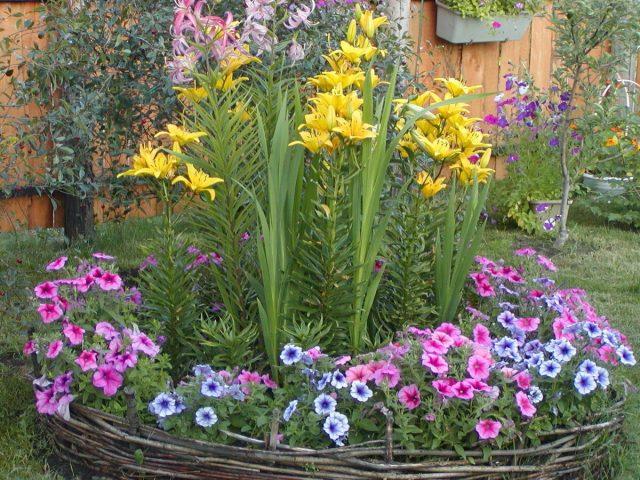
The best companions for lilies in landscape design on a site in the Moscow region are marigolds, nasturtiums and petunias, pansies
How to feed
It is recommended to take into account that after flowering, lilies weaken, so they need to create the most favorable conditions for accumulating strength for next spring. For successful wintering in the Moscow region, the plant needs substances such as phosphorus and potassium.
Optimal feeding for lilies after flowering:
- Superphosphate: the product indirectly helps save moisture in the soil and creates unfavorable conditions for the development of pathogenic microflora. With regular treatment, the plant not only survives the winter months safely, but also withstands temperature changes in the spring.
Up to 10-15 g of the drug is required per 1 m2 of hole
- Potassium phosphate contains an increased amount of potassium. This microelement serves as an immunomodulator for the plant in spring and autumn. Thanks to it, all nutrients will be absorbed faster; after flowering, lilies will successfully resist not only fungi and bacteria, but also harmful insects.
A bed of lilies after flowering requires 10-15 g of potassium sulfate per square meter
- Potassium monophosphate has similar properties, but in areas of the Moscow region it can be used together with other fertilizers in both spring and summer. Fertilizing should be done using powder. To do this, dissolve 25 g of the substance in 10 liters of water.
After flowering, lilies need to be fed with potassium monophosphate only at the roots.
After flowering for the winter, lilies in areas of the Moscow region need not only feeding, but also watering, loosening and weeding. It should be taken into account that the roots of the crop are located close to the surface of the earth, so all manipulations are carried out carefully.
Do I need to water
The amount of work depends on weather conditions: you should not flood the lily after flowering, but even in the Moscow region in hot weather it can die without moisture. If the soil in the garden bed is dense and moisture-absorbing, then you should not be overzealous with watering either in the spring or in the summer, so as not to provoke the development of fungal and bacterial diseases. If the plot in the Moscow region has sandy or sandy loam soil, then moderate watering will not harm the crop. 1-2 times a week is enough.
Digging and replanting bulbs
Most often, the procedure is carried out after the children are formed: 3-5 years after planting the bulbs in open ground in the spring. But if the variety is picky about care and does not tolerate frost, then it will need to be removed from the ground every year in order to plant it in the spring in a plot of the Moscow region.
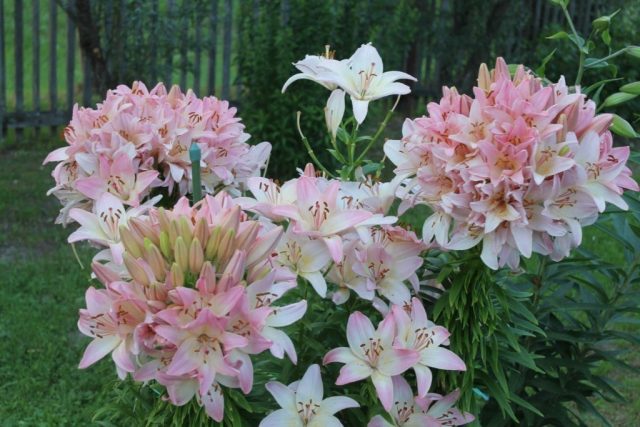
Frost-resistant variety of lilies Marlen (Marlene) can be grown without replanting for 8-10 years in one place
A common reason for digging up bulbs is due to excessive growth of the bush in the spring. It is recommended to plan all manipulations for September, when at least 3-4 weeks have passed after flowering.
Algorithm of actions:
- Remove the bulb from the soil along with the stem and lightly shake it off the ground.
- Sort the collected material: rotted and deformed specimens should be destroyed after flowering. Remove defects such as stains or rot from lilies using a disinfected knife.
- Treat the planting material with a manganese solution.
- Dry the bulbs in a cool, well-ventilated area.The sun's rays should not reach there.
In spring, lilies are planted in open ground less frequently than in autumn. This is due to the rest period. But if you put the bulb indoors for the winter, you can transfer it to the garden bed even after the snow melts.
The location for the flower bed in the gardens of the Moscow region should be selected so that the plant has enough sunlight, there are no drafts, and there is no risk of waterlogging in the area. When planting a crop in the spring under the shade of trees, the shoots of the bush will be long and thin, and bloom poorly.
Work algorithm:
- Clear the soil of weeds and dig up to a depth of 30 cm. If the soil is sandy, mix it with peat or humus. Dilute the clay soil mixture with sand.
- Plant the bulbs in the spring in holes at intervals of 20-25 cm. Deepen the material to 5-25 cm, depending on the size of the baby.
- Sprinkle the roots of the plant lightly with sand and then with soil. It is necessary to ensure that the bulb is completely immersed in the soil, then in the spring it will germinate well.
- Mulch the top of the bed using peat or humus.
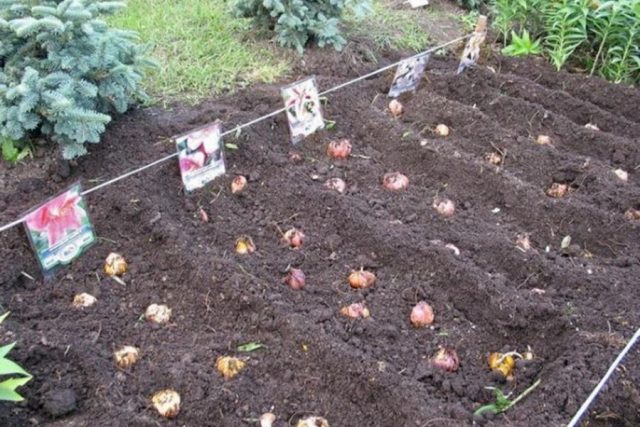
Joint planting of several varieties next to each other in the spring in areas of the Moscow region is allowed
Shelter for the winter
To preserve the bulbs, it is not enough to simply dig them up. To ensure that the babies survive until spring, dry them thoroughly and roll them in wood ash. As an alternative, you can use a dry powder antifungal agent. Wrap each copy in paper or two layers of newspaper, and then move it to a perforated box filled with wood shavings.
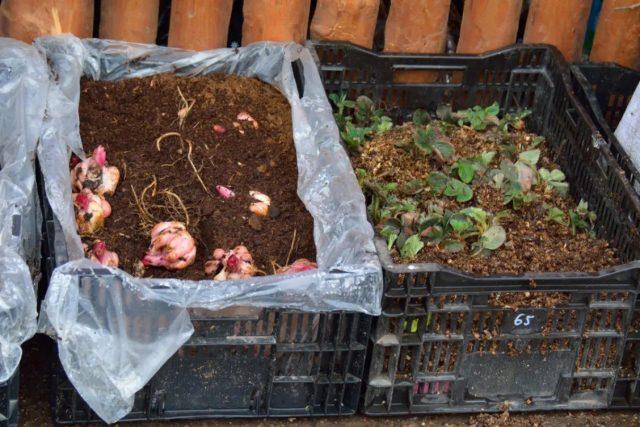
An alternative storage method is a plastic bag with holes filled with peat.
The optimal indoor climate is slightly humid and cool air. If there is an abundance of moisture, the children will rot, without water they will dry out. If the temperature is too high, the bulbs will germinate before spring. Be sure to ventilate the basement or cellar.
Conclusion
If the lilies have faded, this does not mean the end of work on the site. The flower needs further care in order to bloom its buds next spring in the garden. In the Moscow region, when growing a crop, it is necessary to provide it with the necessary watering, loosening and fertilizing. The bulbs need to be dug up over the winter and planted again in the spring.
